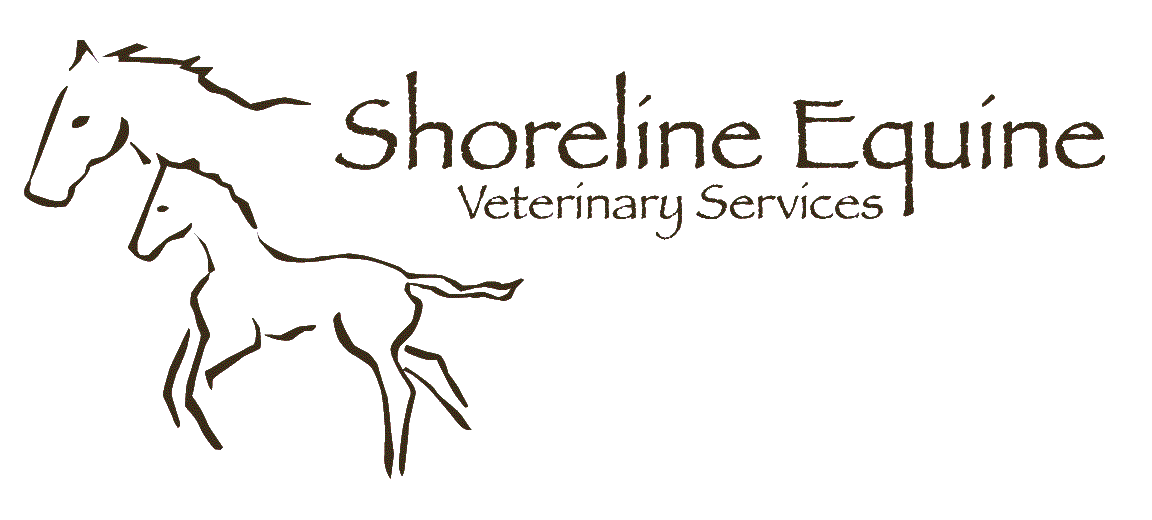Equine Embryo Transfer
by April Armstrong, D.V.M.
by April Armstrong, D.V.M.
Email: aprildvm@yahoo.com
Phone: 805-889-7959

Equine embryo transfer is an advanced reproductive technique that is becoming increasingly popular in the equine industry. There are many reasons why an owner would choose embryo transfer for his or her mare. The most common are to obtain multiple foals from a high quality broodmare, to allow an actively competing mare to produce offspring, or to obtain foals from an aged, sub fertile mare.
Many steps are involved in order to successfully produce an embryo transfer foal from breeding to weaning of your new baby. The donor mare (the mare in which the embryo comes from) is the first consideration. She needs to be healthy and cycling normally. Second and most importantly, is the recipient mare (the mare that will carry, foal, and nurse the embryo transfer foal). This mare is of utmost important because her fertility needs to be superior to that of the donor mare. The ideal recipient mare candidate is a maiden mare, under 8 years of age, and of large size to make foaling easy. Third is the stallion to which the donor mare will be bred. He needs to be of adequate fertility in order to produce a viable embryo.
The actual process of embryo transfer starts with a reproductive exam of the donor mare which may include a rectal and ultrasound exam of her reproductive organs and any further ancillary tests that may assist in recovery of an embryo. The donor mare is then closely evaluated via ultrasound when she is in heat in order to artificially inseminate her at the appropriate time. At the same time 2-3 recipient mares are being evaluated just as closely in order to determine the correct mare to use in the transfer. The donor mare then ovulates, the recipient mare ovulates, and then seven days from donor mare ovulation the actual embryo transfer is done.
The actual procedure involves flushing a large amount of special media into the uterus of the donor mare under sterile conditions. This fluid is then retrieved from the uterus and carefully examined under a microscope to find and evaluate the 7-day old embryo. If an embryo is recovered and is of good quality, it is prepared for transfer into the recipient mare. The recipient mare is again evaluated to insure that she is still a good candidate for transfer and the transfer is completed by placing the embryo into her uterus, using specialized equipment. The recipient mare is then checked via ultrasound at day 14 to determine pregnancy status. If she is pregnant she is checked at days 18, 25, 35, 45 and 60 to monitor her pregnancy. At that time she is sent to live with the donor mare’s family to be cared for throughout her pregnancy, foaling and nursing of the subsequent foal.
Dr. April Armstrong is the owner of Shoreline Equine Veterinary Services in Ventura, California, a full service equine reproduction facility providing artificial insemination, embryo transfer, and stallion services. Please feel free to contact her with any questions or to obtain more information regarding your embryo transfer.
Many steps are involved in order to successfully produce an embryo transfer foal from breeding to weaning of your new baby. The donor mare (the mare in which the embryo comes from) is the first consideration. She needs to be healthy and cycling normally. Second and most importantly, is the recipient mare (the mare that will carry, foal, and nurse the embryo transfer foal). This mare is of utmost important because her fertility needs to be superior to that of the donor mare. The ideal recipient mare candidate is a maiden mare, under 8 years of age, and of large size to make foaling easy. Third is the stallion to which the donor mare will be bred. He needs to be of adequate fertility in order to produce a viable embryo.
The actual process of embryo transfer starts with a reproductive exam of the donor mare which may include a rectal and ultrasound exam of her reproductive organs and any further ancillary tests that may assist in recovery of an embryo. The donor mare is then closely evaluated via ultrasound when she is in heat in order to artificially inseminate her at the appropriate time. At the same time 2-3 recipient mares are being evaluated just as closely in order to determine the correct mare to use in the transfer. The donor mare then ovulates, the recipient mare ovulates, and then seven days from donor mare ovulation the actual embryo transfer is done.
The actual procedure involves flushing a large amount of special media into the uterus of the donor mare under sterile conditions. This fluid is then retrieved from the uterus and carefully examined under a microscope to find and evaluate the 7-day old embryo. If an embryo is recovered and is of good quality, it is prepared for transfer into the recipient mare. The recipient mare is again evaluated to insure that she is still a good candidate for transfer and the transfer is completed by placing the embryo into her uterus, using specialized equipment. The recipient mare is then checked via ultrasound at day 14 to determine pregnancy status. If she is pregnant she is checked at days 18, 25, 35, 45 and 60 to monitor her pregnancy. At that time she is sent to live with the donor mare’s family to be cared for throughout her pregnancy, foaling and nursing of the subsequent foal.
Dr. April Armstrong is the owner of Shoreline Equine Veterinary Services in Ventura, California, a full service equine reproduction facility providing artificial insemination, embryo transfer, and stallion services. Please feel free to contact her with any questions or to obtain more information regarding your embryo transfer.
A man on a horse is spiritually as well as physically bigger than a man on foot. ~John Steinbeck
